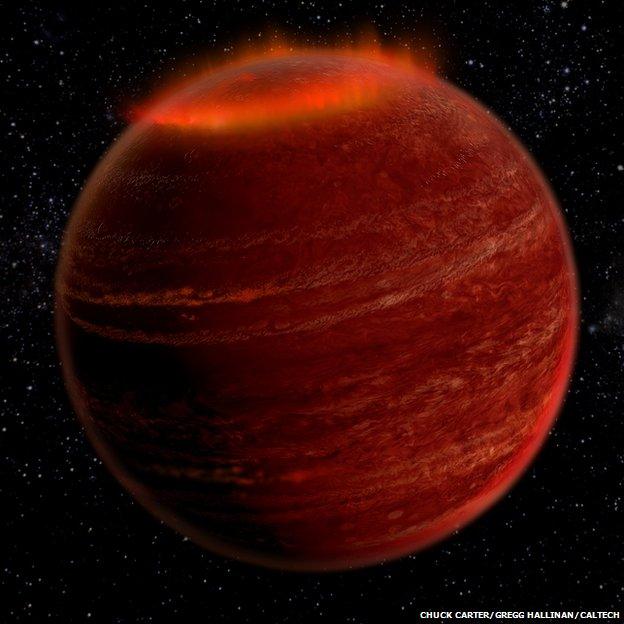Aurora light display seen beyond our Solar System
- Published

The brown dwarf's aurora is red and up to a million times brighter than the Earth's northern lights
An aurora has been spotted outside our Solar System for the first time, scientists report.
An international team detected the light display around a brown dwarf about 18 light years away in the Lyra constellation.
They say the luminous glow looks like the Northern Lights, but is up to a million times brighter and more red than green in colour.
Leah finds out what causes the Northern Lights to happen
Dr Stuart Littlefair from the University of Sheffield said: "This is the first time that we have confirmed we are seeing auroras on brown dwarves."
Dazzling displays
Shimmering auroras are some of the Earth's most dazzling displays. This luminous glow can also appear around all the planets in our Solar System.
They are caused when charged particles from the Sun interact with the atmosphere.
But the illuminated brown dwarf, an object which is too small to have become a star but too massive to be a planet, lies further out in the galaxy.
On Earth, the green glow is caused when the Sun's charged particles interact with oxygen in the atmosphere
The dwarf is called the LSR J1835 and was observed using the Very Large Array radio telescope and the Hale and Keck optical telescopes.
The scientists watched the object as it quickly rotated, and observed how the light changed.
The dwarf's aurora is mainly red in colour because the charged particles are mainly interacting with hydrogen in its atmosphere. On Earth, the greenish glow is caused as the electrons from the Sun hit oxygen atoms.
Some auroras on Jupiter are produced by material from its moon Io
Scientists are puzzled about how the light show is being made but the discovery is helping them to understand more about brown dwarves.
The findings are reported in the journal Nature.
- Published18 March 2015
- Published20 February 2015
- Published10 November 2015
- Published10 December 2014
- Published16 July 2015
- Published3 October 2014
- Published9 July 2015
- Published25 July 2015
